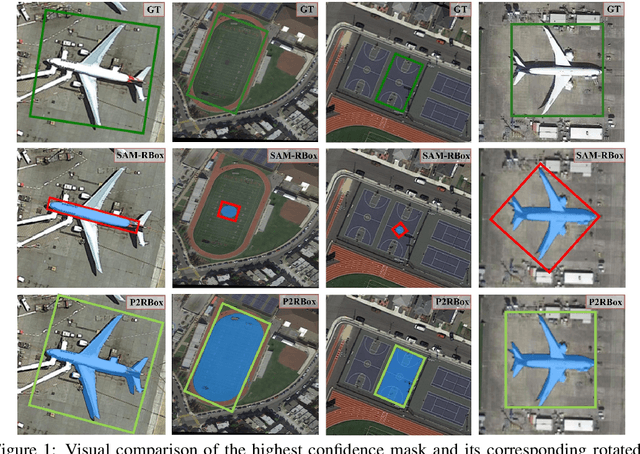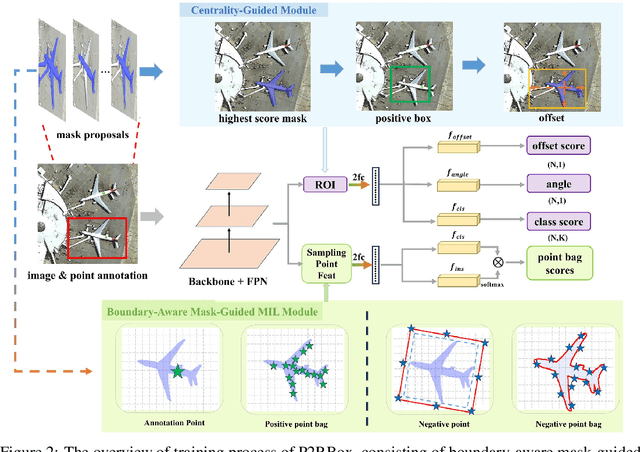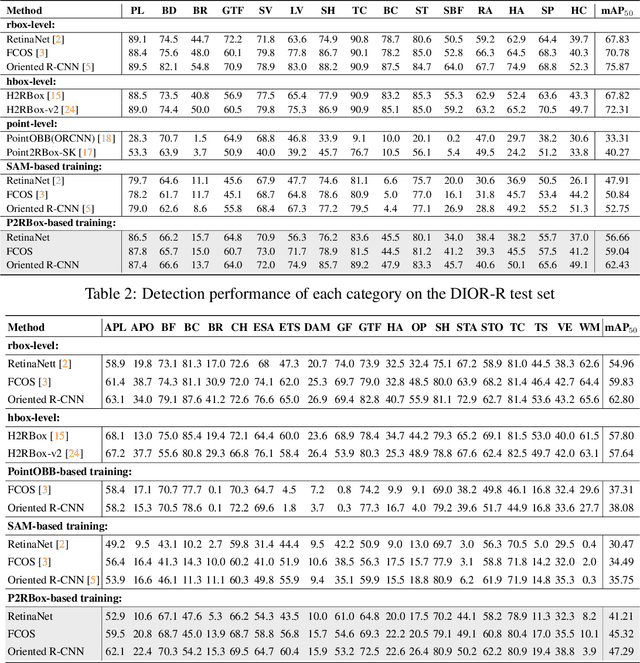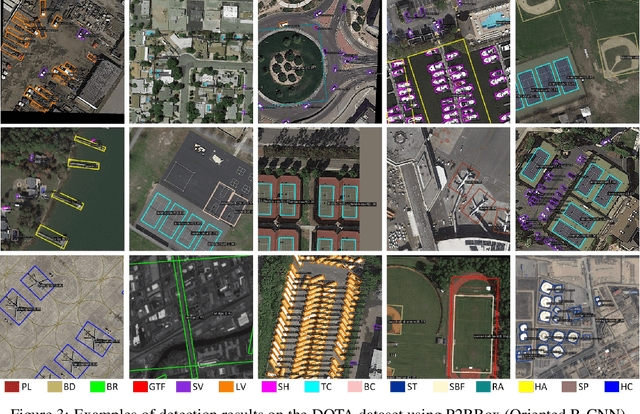P2RBox: A Single Point is All You Need for Oriented Object Detection
Paper and Code
Nov 22, 2023



Oriented object detection, a specialized subfield in computer vision, finds applications across diverse scenarios, excelling particularly when dealing with objects of arbitrary orientations. Conversely, point annotation, which treats objects as single points, offers a cost-effective alternative to rotated and horizontal bounding boxes but sacrifices performance due to the loss of size and orientation information. In this study, we introduce the P2RBox network, which leverages point annotations and a mask generator to create mask proposals, followed by filtration through our Inspector Module and Constrainer Module. This process selects high-quality masks, which are subsequently converted into rotated box annotations for training a fully supervised detector. Specifically, we've thoughtfully crafted an Inspector Module rooted in multi-instance learning principles to evaluate the semantic score of masks. We've also proposed a more robust mask quality assessment in conjunction with the Constrainer Module. Furthermore, we've introduced a Symmetry Axis Estimation (SAE) Module inspired by the spectral theorem for symmetric matrices to transform the top-performing mask proposal into rotated bounding boxes. P2RBox performs well with three fully supervised rotated object detectors: RetinaNet, Rotated FCOS, and Oriented R-CNN. By combining with Oriented R-CNN, P2RBox achieves 62.26% on DOTA-v1.0 test dataset. As far as we know, this is the first attempt at training an oriented object detector with point supervision.
 Add to Chrome
Add to Chrome Add to Firefox
Add to Firefox Add to Edge
Add to Edge